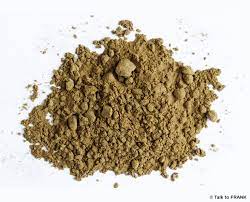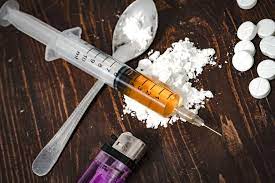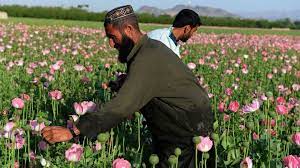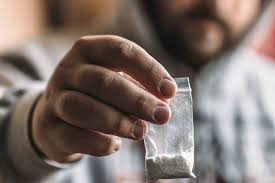Heroin is a highly addictive Schedule I narcotic drug and is a rapidly acting opioid. By any measure, it ranks
among the most dangerous of all controlled substances and is responsible for innumerable tragedies and deaths throughout
history and around the world.
What Is its Origin?
Heroin is processed from morphine, a naturally occurring substance extracted from the seed pod of certain varieties of poppy plants
grown in: Mexico, South America, and South Asia (Thailand, Laos, Myanmar, Afghanistan and Pakistan).
Heroin in the U.S. comes in several forms, primarily white powder from Mexico and South America; and
black tar and brown powder from Mexico.








What are common street names?
Common street names for heroin include: Big H, Black Tar, Chiva, Hell Dust, Horse, Negra, Smack, and Thunder.
What does it look like?
Heroin is typically sold as a white or brownish powder, or as the black sticky substance known on the streets as black tar heroin.
Although purer heroin is becoming more common, most street heroin is cut
with other drugs or with substances such as sugar,
starch, powdered milk, or quinine.
How is it abused?
Heroin can be injected, smoked, or sniffed/ snorted. High purity heroin is usually snorted or smoked.
What is its effect on the mind?
Because it enters the brain so rapidly, heroin is particularly addictive, both psychologically and physically.
Heroin users report feeling a surge of euphoria or rush
followed by a twilight state of sleep and wakefulness.
What is its effect on the body?
One of the most significant effects of heroin use is addiction. With regular heroin use, tolerance to the drug develops.
Once this happens, the person must use more heroin to achieve the same intensity.
As higher doses of the drug are used over time, physical dependence and addiction to the drug develop.
Effects of heroin use include: Drowsiness, respiratory depression, constricted pupils, nausea, a warm flushing of the skin, dry mouth,
and heavy extremities.
What are its overdose effects?
Because heroin users do not know the actual strength of the drug or its true contents, they are at a high risk of overdose or death. The effects of a heroin overdose are: Slow and shallow breathing, blue lips and fingernails, clammy skin, convulsions, coma, and possible death.
Which drugs cause similar effects?
Other opioids such as OxyContin, Vicodin, codeine, morphine, methadone, and fentanyl can cause similar effects as heroin.
What is its legal status in the United States?
Heroin is a Schedule I substance under the Controlled Substances Act meaning that it has a high potential for abuse, no currently accepted medical use in treatment in the United States, and a lack of accepted safety for use under medical supervision.
See U.S. Department of Justice, Drug Enforcement Administration -
Drugs of Abuse | A DEA Resource Guide: 2024 EDITION.


